Thermocouple Design Guide
Designing a temperature sensor
This guide is for engineers who are unfamiliar with temperature sensing technology
to give a good starting place to help you solve your temperature related problems.
It covers:
- Different temperature sensing technologies
- Decision making criteria
- Common sensing techniques
- How to use temperature sensors
- Choosing the right sensor for your problem
Alternatively, you can view our Thermocouple and Resistance Thermometer product pages
for detailed information on all types and designs of temperature sensors.
Contents
Data Requirements
What temperature is being measured and how accurate do you need to measure?
Economic Considerations
How much are you willing to spend and how long do you want the sensor to last?
Application Considerations
Process environment and how it affects sensor design
Moderate and Light Use Sensor Design
Long lasting sensors operating within their limits.
Harsh Use Sensor Design
Sensors close to their physical limits or under attack from the process.
Summary
Putting it all in practice and your next steps
Data Requirements
The type of temperature sensor you choose will depend on the temperature range and accuracy required.
Different sensor technologies have different maximum temperatures and also accuracies.
What is your required temperature range?
The temperature sensor you choose will depend on the usual temperature it will experience and also the maximum over-temperature that may be experienced.
Pushing a temperature sensor to its limits for long periods of time could make it develop an error (called drift) and the temperature sensor will record a lower temperature than it is actually experiencing.
If you are using the temperature sensor in extreme temperatures its best to use the sensor only once so you don’t get drift. If the sensor experiences temperatures within its operating range drift will not happen and the temperature sensor can be reused many times accurately.
The chart below should help you choose which sensor is suitable for your application:
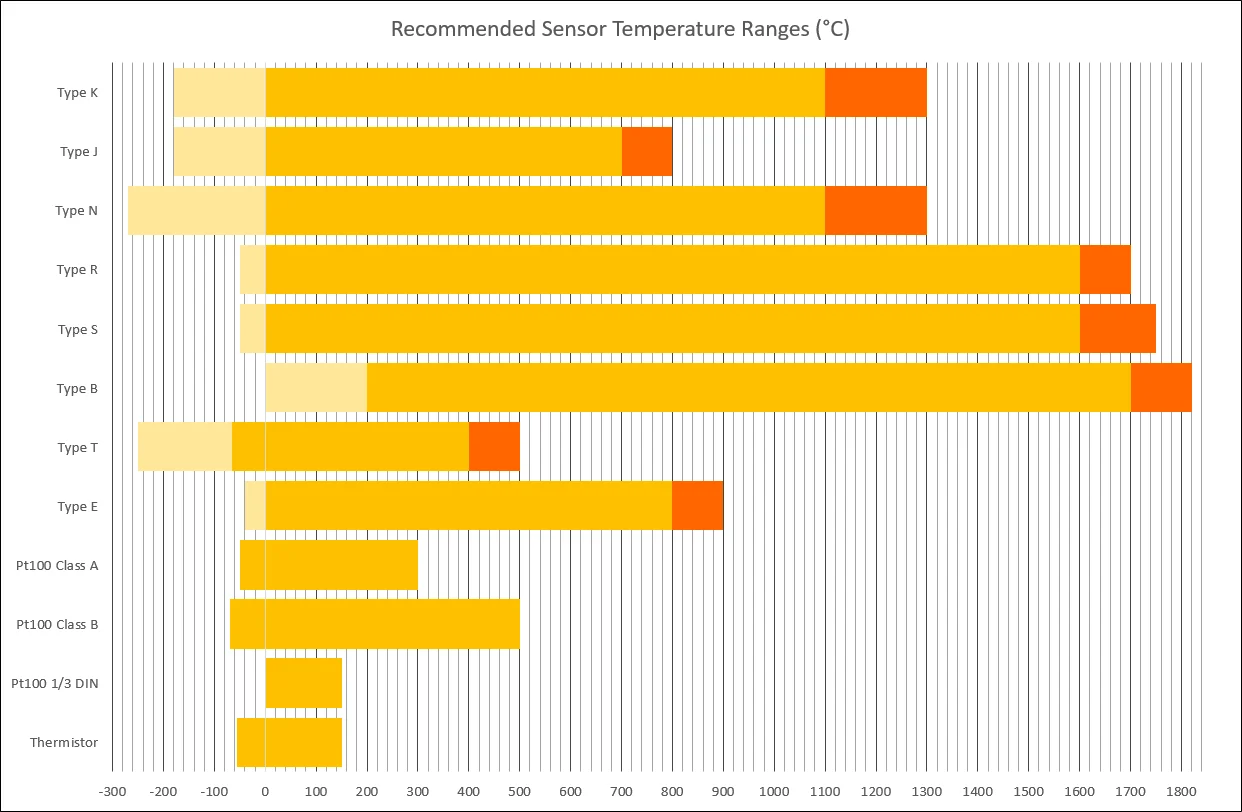

What is your desired accuracy?
Different types of sensors have different accuracy tolerances. All sensors we manufacture are within defined tolerance bands to European and International standards (BS EN 60584-1, IEC 60751 etc).
If small inaccuracies are tolerable in your process then standard sensors are fine. Our sensors are sold to operate within their defined tolerance, although they have not been proven in finished form. All our sensors are made with calibrated materials and we can supply certificates to prove their tolerance. If required we can calibrate a representative sensor from the same batch. A calibration certificate will be supplied in this case.
If tighter tolerances are required then all sensors can be supplied with calibration certificates. If you require tight tolerances with high reliability, our sensors can be tested to UKAS laboratory standards and supplied with a UKAS calibration certificate provided. These calibrations are carried out in a fully controlled environment and are the tightest accuracies available.
This chart shows the tolerances that Peak Sensors will normally supply to:
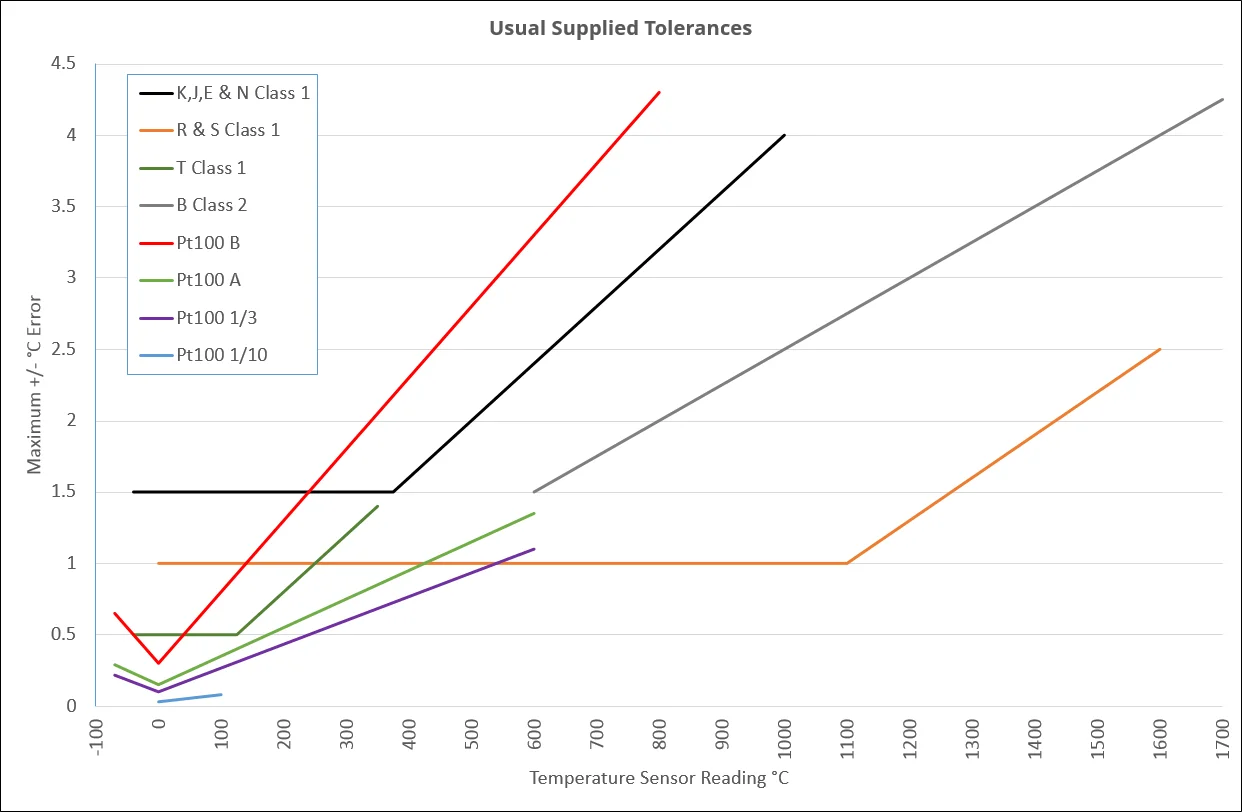
Economic Considerations
Many variables will affect the price of the temperature sensors you require. If you require lower temperatures, with low accuracy, sensors will generally be cheaper, but if you require robust, higher accuracy sensors, it might be more costly.
Here are a number of factors to consider that can affect the price of a temperature sensor you require:
Number of sensors required
If you require a single sensor it might not increase its cost if it is a standard design, but the more customised your design the more development cost will be included in your sensor. Development costs will easily be absorbed by manufacturing volumes of temperature sensors. If you do require 1000’s of temperature sensors, or sensors on a regular basis, we can work with you to produce massive cost reductions by design for manufacture principles with varying levels of automation and simplification. We often work with OEMs where this is the case and help them to keep their unit costs for temperature sensors down while providing the perfect temperature sensor for their application.
Material sizes that are available
Cables, ceramics and other sensor components all have standard sizes. Being flexible in your temperature sensor design will enable you to reduce cost by choosing components in standard sizes. Special sizes will be available but will require custom manufacture and may have minimum order quantities. There is a general rule that small diameter sensors are usually cheaper up to a certain point. Very small diameter sensors are often more costly as they are more intricate to manufacture and are very fragile.
Operating and maximum temperature of your process
As mentioned in temperature requirements, your measuring temperature will affect sensor selection but also the higher the measuring temperature the more expensive the sensor component materials. When you are at the operating limits of a type k thermocouple, there is quite an increase in moving to type r thermocouples to measure the higher temperatures. Over estimating the temperature of your process can increase temperature sensor cost, when cheaper alternatives may be adequate.
Expected life-cycle of the sensor
A sensor design can be cost effective to replace if it fails, or you can design a sensor to be very robust to increase maximum lifetime. You will need to conduct a cost benefit analysis in order to decide which option suits your process. We have helped customers move from both options to the alternative. Customers have been using cheap sensors that fail often and have found that by increasing the robustness of the sensor although it increased cost per unit, in the long run it was cheaper. Looking at the opposite, we have helped customers which were using costly, over engineered sensors. By switching the customers to cheaper, easy to replace sensors, although they witnessed more failures in the long run their costs were also reduced. How long you require a sensor to last is very specific to your application. We also manufacture ‘fault-free’ temperature sensors that are designed to not fail through normal use.
Potential reuse of components in sensor repair
Being able to reuse components when sensors fail may help to reduce their replacement cost. Components such as heads and temperature transmitters can be reused in new sensors to help reduce cost. It is our environmental policy to work with customers to help minimise the impact of our products on the environment through reuse of as many components as possible. We also comply with the Restriction of Hazardous Substances in Electrical and Electronic Equipment (ROHS) Directive.
Scrap value of the sensor
Rare metal thermocouples such as type r, type s and type b contain precious metal wire which is a significant cost of the temperature sensor. We are able to recycle this material which will help reduce the cost of repairing and replacing your existing sensors.
Calibration requirements
As mentioned when looking at accuracy, temperature sensors can be calibrated with both UKAS and laboratory traceable calibration. Both types of calibration will have costs associated but also the number of temperature points you have calibrated will affect cost as each point is added cost. You can also decided to calibrate every individual sensor or batch calibrate a sample of produced temperature sensors.
Lead-time for delivery
All of our temperature sensors have a standard lead-time for manufacturing. We carry stock of most sensor components but specialist materials will need to be ordered. As with most manufactured products requiring something quick can often carry a premium because production schedules will need to be rearranged or quick delivery of sourced components arranged.
The more information you can gather about what you require, makes it easier to help us design a temperature sensor that will meet your requirements and budget.
The graph below can help in deciding what type of sensors you should use:

Application Considerations
Temperature sensors consist of not only the sensor but means to protect it. More time is spent choosing the best method of protection than choosing the type of sensor. The way a sensor is protected is called the protection sheath and its selection can be independent of the type of sensor.
Protection Sheath Functions
The protection sheaths main aim is to defend the temperature sensor from the environment and your process. Without protection the temperature sensor lifespan and accuracy could be impacted.
Protection sheath functions include:
- Prevent dust or particles from contaminating the temperature sensor
- Protect the sensor from pressure, abrasion or chemical conditions of the process
- Provide a means for the sensor to attach to a process
- Ensure that the sensor reading is dominated by the process temperature
- Provide a means to easily change sensors
- Protect the temperature sensor in transport, storage and use
Light Use vs Harsh Use
Temperature sensors can be divided into two groups with different protection needs:
Moderate and Light Use
The most important design consideration when looking at this type of sensor is how the sensor will be connected and mounted to your process.
These sensors are often categorised by:
- Mainly used with equipment
- Often included within customers products
- Lower temperatures
- Integral housing and sensor assembly
- Inexpensive
- Single use or long life
- High design effort to reduce unit cost
- Can be high volume
Harsh Use
The most important design consideration when looking at this type of sensor is the selection of protection sheath to protect the sensor from high temperature or chemical attack.
These sensors are often categorised by:
- Mainly used in plants/factories
- Helps control a process
- Smaller volumes
- High temperatures
Harsh environment – chemical attack, pressure, abrasion, carburisation - Can be dismantled for repair or precious metal recycling
- Higher unit cost
Moderate and Light Use Temperature Sensors
Moderate and light use temperature sensors are not used to their limits. They can be cheap, long lasting and are often designed in an easy to use form.
There are three basic design forms they are produced from:
- Flexible Cable Temperature Sensors
- Rigid Metal Tube Temperature Sensors
- Mineral Insulated Temperature Sensors
1. Flexible Cable Temperature Sensors
Flexible cable temperature sensors are made from readily available temperature sensor cable. They can be a number of different types of sensor including: resistance thermometers, thermistors, integrated circuits or thermocouples. The measuring point is usually protected by a metal pocket or plastic coating. The temperature limit is determined by the maximum temperature of the cable. These sensors can be cheap to make. Both ends of the sensor can be highly customised to your needs e.g. fast response measuring tip and a plug termination for connecting to equipment.
Flexible Cable Temperature Sensor Example:
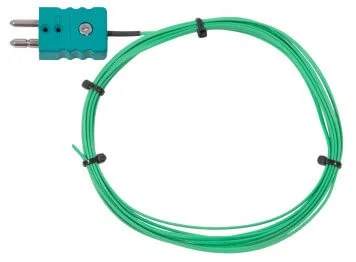
Standard Thermocouple Plug (Cold end junction)
Thermocouple Measuring Poing (Hot end junction)
Length of flexible thermocouple cable
Measuring Point Protection and Connection to the process
Flexible cable sensors can have a vareity of hot end configurations, meaning the sensor can be protected in a vareity of ways and also attached to your process in a number of ways. Below are some options for measuring point protection with links to some example temperature sensors designs.
The following sensors are only examples. The designs and materials of the thermocouples, resistance thermometers (RTDs) and protection sheaths can vary according to your personal requirements.
If you have any questions or need temperature sensors manufactured, please contact us.
Metal Pocket
A metal pocket is the most common hot end protection for a cable temperature sensor. The sensor and cable are secured into a metal tube which is closed at the hot end. This provides protection for the sensor and also an easy way to immerse the sensor into a process.
Examples:
Ceramic Pocket
A ceramic pocket is very similar to a metal pocket but not as common. Generally you will use a ceramic pocket over a metal pocket if you are measuring a higher temperature.
Examples:
Eye
A temperature sensor can be attached to a washer, eyelet or ring. This can they be easily attached to a process with a screw or bolt.
Examples:

Pipe Clamp
A temperature sensor can be attached to an adjustable pipe clamp/clip for measuring the temperature of pipes. This type of cable temperature sensor is often used in HVAC applications to find out the temperature differential between two pipes.
Examples

Screw Tip
A temperature sensor can be embedded within a bolt which then can be easily attached to a process.
Examples:

Leaf
A temperature sensor can be attached to a small foil leaf. This is useful for measuring the temperature between to objects or in small spaces such as between heater bands.
Example:

Bayonet
A temperature sensor can be attached to a bayonet fitting/connector. This can be spring loaded to keep the measuring point in contact with the process. Bayonet thermocouples are often used in plastic extruders and injection moulding machines.
Example:

Exposed Junction Cable Temperature Sensors
Some applications are so mild that the sensors require no hot junction protection, or even insulation. These are the cheapest temperature sensors to manufacture. They are no less reliable or accurate than any other sensors, but they are clearly vulnerable to dust, dirt or abuse.
We would recommend them for short term or limited use only, unless a suitable housing is used. They can be so cheap that they are disposable.
Exposed Junction Cable Temperature Sensor Example:

Simple cable can be laid side by side or twisted (Insulation)
Exposed Pt100 sensor (Can be RTD element or thermocouple junction)
Basic tails (Cold end termination)
Exposed Junction Designs
Exposed junction sensors come in a number of different options. From very basic sensors, to sensors with some insulation.
Bare Elements without Insulation
Basic temperature sensor elements like these are supplied uninsulated and generally need further assembly into sheaths or equipment. They can be supplied as replacement elements for broken sensors if it is economical to do so.
Examples:
Basic Resistance Thermometer Element
Basic Thermocouple Wire Element
Temperature Sensors with Basic Insulation
Ceramic Insulators
The next level of complexity for a basic temperature sensor is to add some insulation. This ceramic insulation can come in a number options. Either a single length of ceramic is used, or a number of small sections of ceramic insulator are used to add a small amount of flexibility, finally fish spine ceramic beads can be used as insulation.
Examples:
Basic Thermocouple Insulated Element
Basic Resistance Thermometer Insulated Element
Wire Insulation with No Outer Sheath
Rather than ceramic insulation, plastics or glass fibre can be used on each wire to insulated the temperature sensor conductors. Each leg or wire can be either left loose or twisted together. These basic sensors can still have further protection added or further assembly conducted into equipment. The maximum operating temperature of the sensor will be dictated by the type of insulated used.
Examples:
Basic Thermocouple Insulated Wire Element
Basic Resistance Thermometer Insulated Wire Element
Wire Insulation with Outer Sheath
The final level of insulation that a basic sensor can have is instead of having individual wires or wires twisted together, the insulated wires can be protected by an outer sheath to form a cable temperature sensor. This still is a very inexpensive component for equipment manufacturers to install. A variety of options of cable type and sizing means this is a very flexible design that can be tailored to your exact needs.
Examples:
2. Rigid Metal Tube Temperature Sensors
Sensors mounted in rigid metal tubes provide an inexpensive sensor which is reasonably robust. Sensors can be supplied straight or bent according to your specification. As the sensor is produced and fixed into a metal tube a seal can be placed in the tube. There is therefore no pot seal or other increase in diameter at the cold end of the sensor. Any commercially available metal tube can be used and many sensor types inserted into the tube. This gives a huge range of combinations. The tube can have process fittings welded, head connection components attached, or deformed for a variety of application reasons. As the sensor is not being exposed to the toughest conditions it is usually made of Stainless Steel, although other materials are available.
Rigid Metal Tube Temperature Sensor Example:

Protected measuring point (Can be RTD element or thermocouple junction)
Robust rigid tube of Stainless Steel supplied straight or bent
Transition from tube to Terminal Head (Wide variety of cold end terminations possible)
Rigid Metal Tube Designs
Below are some rigid metal tube temperature sensors designs. Links are available to datasheets for each sensor design.
The designs and materials of the thermocouples, resistance thermometers (RTDs) and protection sheaths can vary according to your personal requirements, below are only some examples.
Contact us and we’ll help you decide on the most appropriate design for your application.
Lead and Flexible Tails
This is the simplest design. The metal tube transitions to flexible temperature sensor cables, with or without a pot seal. Instead of tails a plug or socket can be fitted.
Examples:
(Examples are MI cable but design is same for rigid tubes)
Tube Thermocouple with Lead and Flexible Tails
Tube Resistance Thermometer with Lead and Flexible Tails
Temperature Transmitter
The rigid metal tube is attached to a standard DIN plate which is then connected to a temperature transmitter. The transmitter converts the sensor signal to a format favoured by instrumentation such as 0-20 mA. This enables to sensor to be easily attached to an instrument. This is still an inexpensive sensor design and is often used in pocket or head assemblies. A compression fitting can also be added. The cold end maximum temperature will be determined by the operating temperature of the transmitter.
Examples:
Thermocouple Insert with Transmitter
Resistance Thermometer Insert with Transmitter
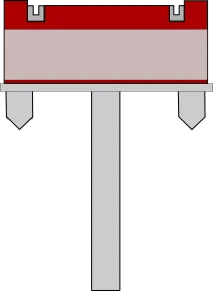
Terminal Head
A wide variety of terminal heads can be added to the cold end of a temperature sensor. We can provide many standard designs such as KNE, KS, DIN B, ALA, BUZ.
A terminal heads protects the terminations from both physical damage and isothermal errors. Most heads are IP rated between IP65 and IP67. Within the head either loose tails, temperature transmitter or ceramic block is fitted. Temperature sensors with terminal heads are most suited for quick replacement in plants.
Examples:
(Examples are MI cable but design is same for rigid tubes)
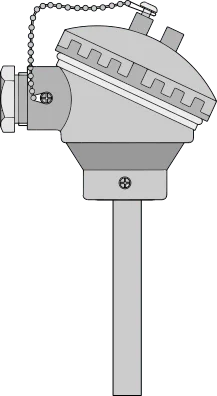
Terminal Block
Similar to a sensor with temperature transmitter. The rigid tube is attached to a standard DIN plate, but a ceramic block is mounted instead of a transmitter. It is a very inexpensive design that is suitable for pockets, heads and quick replacements. It can be spring loaded to ensure good thermal contact with your process.
Examples:
Thermocouple Insert with Block
Resistance Thermometer Insert with Block
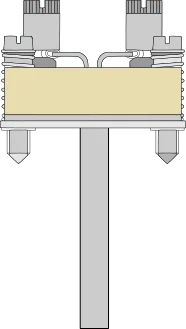
Sensor with Handle
A rigid tube sensor can be attached to a plastic handle. This enables the sensor to be easily used in either in an industrial environment or as an insertion probe for food manufacture and processing. After the handle leads and tails can be terminated with a plug to easily connect to instrumentation or hand held readouts. The sensor can be supplied with reduced or pointed tips for easier process insertion.
Example:
Thermocouple Hand Held Probes

3. Mineral Insulated Cable Sensors
Mineral Insulated Metal Sheathed (MIMS) Temperature Sensor Cable has conductors surrounded by an inert tightly packed powder (Magnesium Oxide). The powder is held in place by a metal sheath. Insulation resistance of over 100MΩ is possible between each conductor and between the sheath and any conductor. For use in moderate applications, an mineral insulated cable is used because it is readily available, tougher than flexible cables, easily bent into unusual shapes and remains there, and is a generally very robust product.
All mineral insulated sensors we supply conform to IEC 61515:2016 – Mineral insulated metal-sheathed thermocouple cables and thermocouples.
Mineral Insulated Sensor Example:
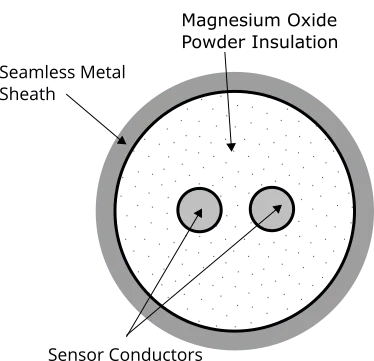
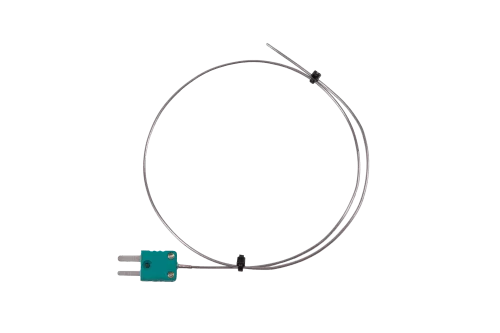
Mini plug connection (Many cold end options available)
Length of MI cable (Can be coiled)
Welded Tip - Insulated Junction (Can also be grounded or exposed)
Mineral insulated temperature sensors exhibit the following features:
- High integrity construction suited to high temperatures and high mechanical forces
- High accuracy and stability throughout life
- Fast response
- Available in diameters between 0.25mm and 10.8mm
- Units can be bent, twisted, even flattened to suit an application
- Very long sensors can be supplied coiled and easily straightened on site
- The seamless metal tube is available in a number of alloys to suit many applications – All common conductors can be sourced
- Hot junctions can be insulated, grounded or exposed.
Mineral Insulated Cable Designs
Below are mineral insulated temperature sensors designs. Links are available to datasheets for each sensor design.
The designs and materials of the thermocouples, resistance thermometers (RTDs) and protection sheaths can vary according to your personal requirements, below are only some examples.
Contact us and we’ll help you decide on the most appropriate design for your application.
Basic Seal
A basic seal is the easiest, cheapest and most simplistic cold end design. It does not offer any cold end protection and is only suitabe for assembly into your own high volume equipment or to fit your own cold end fitting. The mineral insulated cable is sealed with an epoxy with the temperature sensor conducts bare above the seal.
Examples:
Mineral Insulated Thermocouple with Basic Seal
Mineral Insulated Resistance Thermometer with Basic Seal
Lead and Flexible Tails
This is a simple design. The mineral insulated cable transitions to flexible temperature sensor cables, with or without a pot seal. Instead of tails a plug or socket can be fitted.
Examples:
Mineral Insulated Thermocouple with Pot Seal and Flexible Tails
Mineral Insulated Resistance Thermometer with Pot Seal and Flexible Tail
Instead of short tails, a long flexible temperature sensor cable can be attached:
Mineral Insulated Thermocouple with Permanently Attached Cable
Mineral Insulated Resistance Thermometer with Permanently Attached Cable
Temperature Transmitter
The mineral insulated cable is attached to a standard DIN plate which is then connected to a temperature transmitter. The transmitter converts the sensor signal to a format favoured by instrumentation such as 0-20 mA. This enables to sensor to be easily attached to an instrument. This is still an inexpensive sensor design and is often used in pocket or head assemblies. A compression fitting can also be added. The cold end maximum temperature will be determined by the operating temperature of the transmitter.
Examples:
Thermocouple Insert with Transmitter
Resistance Thermometer Insert with Transmitter
We can also supply with just a DIN plate so you can fit your own transmitter:
Mineral Insulated Thermocouple Insert with DIN Plate
Mineral Insulated Resistance Thermometer Insert with DIN Plate

Terminal Head
A wide variety of terminal heads can be added to the cold end of a temperature sensor. We can provide many standard designs such as KNE, KS, DIN B, ALA, BUZ.
A terminal heads protects the terminations from both physical damage and isothermal errors. Most heads are IP rated between IP65 and IP67. Within the head either loose tails, temperature transmitter or ceramic block is fitted. Temperature sensors with terminal heads are most suited for quick replacement in plants.
Examples:

Terminal Block
Similar to a sensor with temperature transmitter. The mineral insulated cable is attached to a standard DIN plate, but a ceramic block is mounted instead of a transmitter. It is a very inexpensive design that is suitable for pockets, heads and quick replacements. It can be spring loaded to ensure good thermal contact with your process.
Examples:
Mineral Insulated Thermocouple Insert with Block
Mineral Insulated Resistance Thermometer Insert with Block

Standard Plug
A standard plug at the cold end of a mineral insulated temperature sensor enables the sensor to be easily replaced or moved. It can be plugged into various instrumentation. The plug is attached to the mineral insulated cable with a pot seal. Standard plugs are colour coded to enable identification of that type of temperature sensor they are connected to.
Examples:
Mineral Insulated Thermocouple with Standard Plug
Mineral Insulated Resistance Thermometer with Standard Plug

Miniature Plug
A miniature plug at the cold end of a mineral insulated temperature sensor enables the sensor to be easily replaced or moved. It can be plugged into various instrumentation. The plug is attached to the mineral insulated cable with a pot seal. Standard plugs are colour coded to enable identification of that type of temperature sensor they are connected to.
Examples:

Harsh Use Temperature Sensors
These sensors are often being used close to their physical limits. The nature of the materials used in these sensors leads to more limited design shapes, larger sizes, thicker sections and limited material selection. The main process resisting component is the most important choice. There are three basic design forms for these sensors:
- Ceramic sheaths
- Tough metal sheaths for high temperatures
- Tough metal sheaths for chemical environments
1. Ceramic Sheaths
Ceramic materials reach the highest temperatures that are often seen in industry. Below is a summary of ceramic protection sheath materials:
Ceramic Sheath Material | Maximum Temperature |
Recrystalised Alumina (RA) | 1750 °C |
Aluminous Porcelain (AP or IAP) | 1500 °C |
Sillimanite 60 | 1600 °C |
Silicon Carbide (Clay Bonded) | 1400 °C |
Silicon Carbide (Recrystalised) | 1600 °C |
Syalon 101 | 1000 °C |
Quartz | 1500 °C |
Full specifications for these materials can be found here: Protection Sheath Material Datasheets
Ceramic Sheath Designs
The sheaths are sometimes used alone, but usually have either a metal shank attached, or have a shank and head. This provides a full enclosure for a sensor insert and to allow a process connection to be used without risk of damage to the ceramic.
Ceramic Protection Sheath With Platinum Thimble & Head

Ceramic Protection Sheath With Shank and Head

Ceramic Protection Sheath
Ceramic Protection Sheath With Shank
2. Tough Metal Sheaths for High Temperatures
Some applications are at temperatures where special alloys can provide adequate sensor life, and be more robust than a ceramic sheath. The tube used will usually be seamless and have a welded disc at the cold end. The sensor diameter will be typically 20 to 30 mm. As the sheath is weldable, simple process connections can be easily fixed in place. Below is a summary of metal sheath materials for high temperature applications:
Sheaths are available in the following forms, click to view full datasheets:
Material | Maximum |
310 SS | 1100 °C |
446 SS | 1100 °C |
253 MA | 1150 °C |
353 MA | 1175 °C |
Alloy 600 (Inconel) | 1000 °C |
Sanicro 31 HT | 1100 °C |
Alloy 800 HT (Incoloy) | 1100 °C |
Kanthal AF, APM | 1300 °C |
Kanthal Super | 1700 °C |
Full specifications for these materials can be found here: Protection Sheath Material Datasheets
High Temperature Metal Sheath Designs
High temperature metal sheaths are available in the following forms, click to view full datasheets:
Fabricated Metal Protection Sleeve with Head

Fabricated Metal Protection Sleeve for Air Sensors

Fabricated Metal Protection Sleeve with Flange
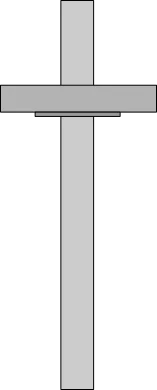
Fabricated Metal Protection Sleeve with Process Thread

Fabricated Metal Protection Sleeve with Reduced Tip
Fabricated Metal Protection Sleeve
Right Angle Metal Protection Sleeve
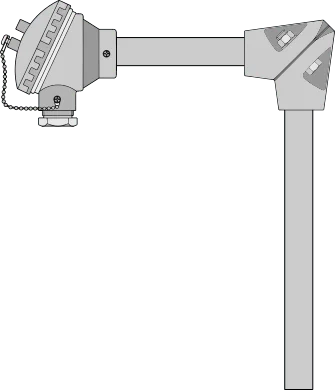
Tough Metal Sheaths For Chemical Environments
The materials used for these sensors must withstand the chemicals and the pressure associated with Chemical Plants. The potential for accidents is high, this demands material certification, pressure testing and a range of other contractual requirements. The starting materials can be commercially available alloys, special melts and forged grades. Very often sheaths and sensors are built to customers own drawings.
Material | Notes |
321 SS | Commonly called 18/8. Excellent corrosion resistance and remains ductile. Used for MI sheathing for type J and Pt 100’s. Withstands hot crude oil products, steam and combustion gases. Carbon dioxide to 650 °C. Air up to 900 °C without temperature variation. |
316 SS | Excellent corrosion and pitting resistance. Similar to 321 SS but with better acid resistance. Usually used in chemical plants and many other industrial applications. |
Monel 400 | Resists sea water, steam, Salt and caustic solutions, Used in heat exchangers Other Monel materials available. |
Hastelloy C276 | Corrosion resistance in reducing and oxidising atmospheres. Severe environments, Maintains corrosion resistance after welding. |
Hastelloy B2 | Significant resistance to reducing environments, and many acids. |
Full specifications for these materials can be found here: Protection Sheath Material Datasheets
Tough Metal Sheath Forms
This is a selection of what we can offer. We have many other materials available, including fabrications with sheet cladding or polymer coating. Click to view full datasheets:
Solid Drilled Pocket with Flange
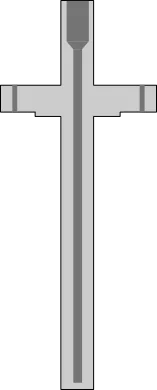
Solid Drilled Pocket with Process Thread

Solid Drilled Pocket with Stub Flange
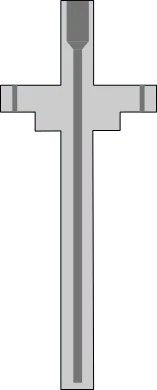
Solid Drilled Pocket – Weld In

Summary
There can seem like there are many things that need to be taken into account when designing a temperature sensor. The key is to determine what are the critical factors which relate to your process or product and dismiss the rest. If you over engineer your temperature sensor it won’t be economical.
In order to make the process as easy as possible answer the questions below and send your answers to us to help you get the sensor for your application:
- What is your temperature range?
- What are your accuracy requirements?
- How many sensors do you need?
- What are the size requirements or restrictions? Diameters? Lengths?
- How long does it need to last?
- Do you require calibration?
- When do you need it?
- Is it light use at ambient temperature, or harsh use at extremes of temperature, under attack?
- How do you want to measure your process/product? (Hot end)
- How does it connect to your equipment/instrumentation ? (Cold end)
Some of these might be “don’t know” or irrelevant but we’re here to help.
Submit an Enquiry
"*" indicates required fields
